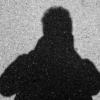Circ. Polarizers on M glass
-
Recently Browsing 0 members
- No registered users viewing this page.
-
Similar Content
-
- 7 replies
- 294 views
-
- 13,285 replies
- 1,130,034 views
-
- 1 reply
- 181 views
-
- 43 replies
- 2,887 views
-
- 10 replies
- 1,666 views
-




Recommended Posts
Join the conversation
You can post now and register later. If you have an account, sign in now to post with your account.
Note: Your post will require moderator approval before it will be visible.